NEARLY 40 million people in England live in an area with almost no new Covid cases, it’s reported.
Seventy per cent of the country lives in areas where less than three infections were recorded in the most recent weekly figures, The Times reports.

Read our coronavirus live blog for the latest updates
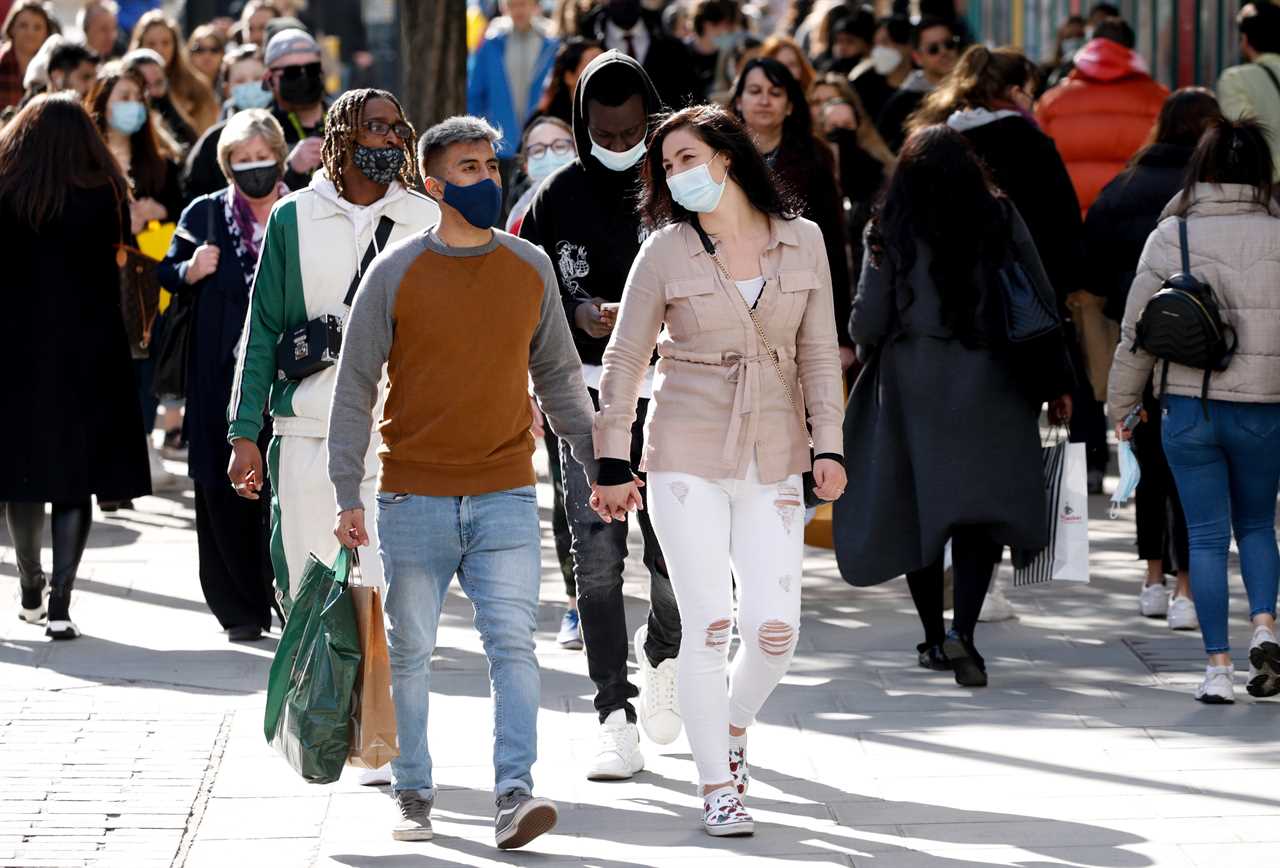
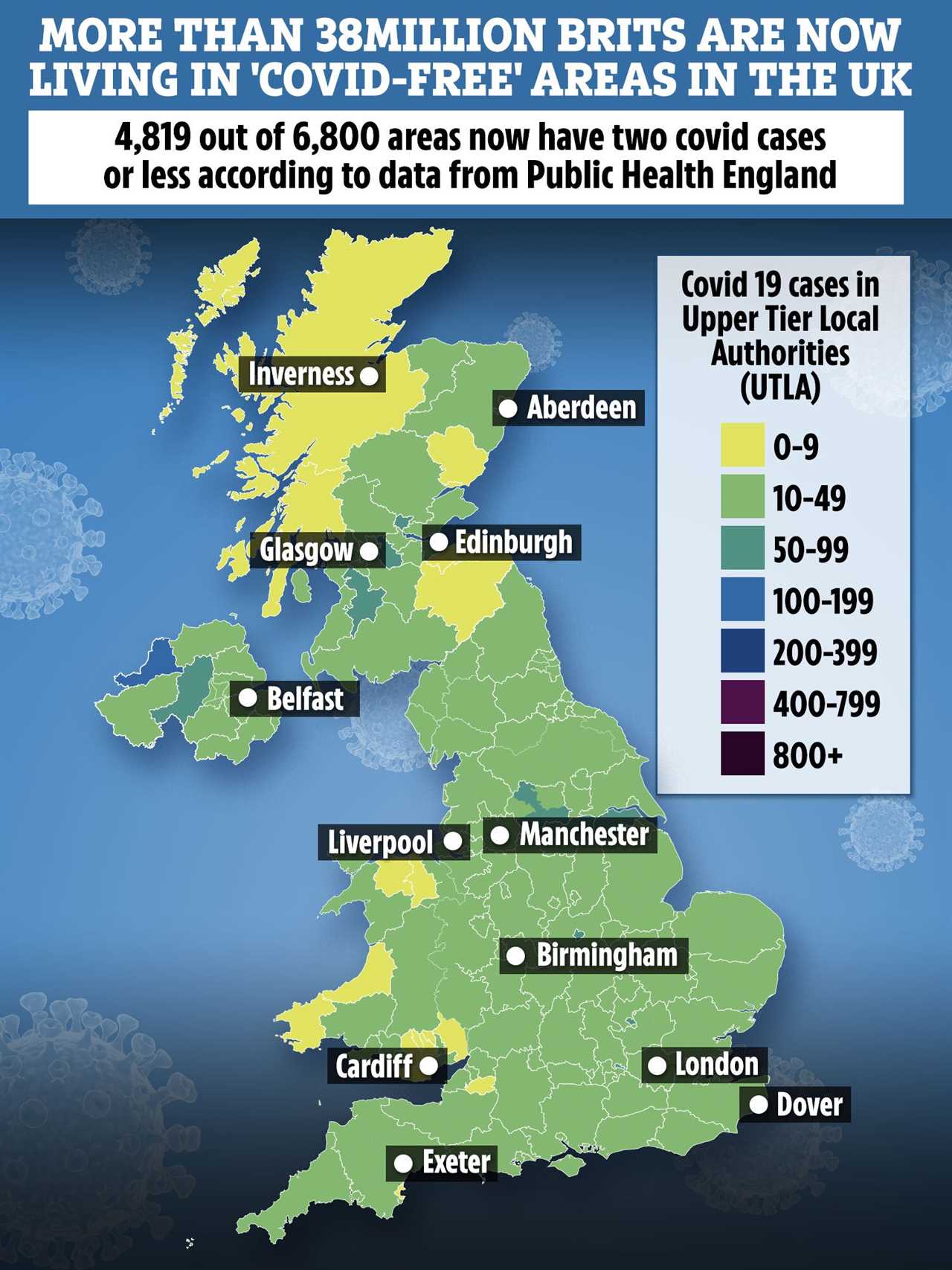
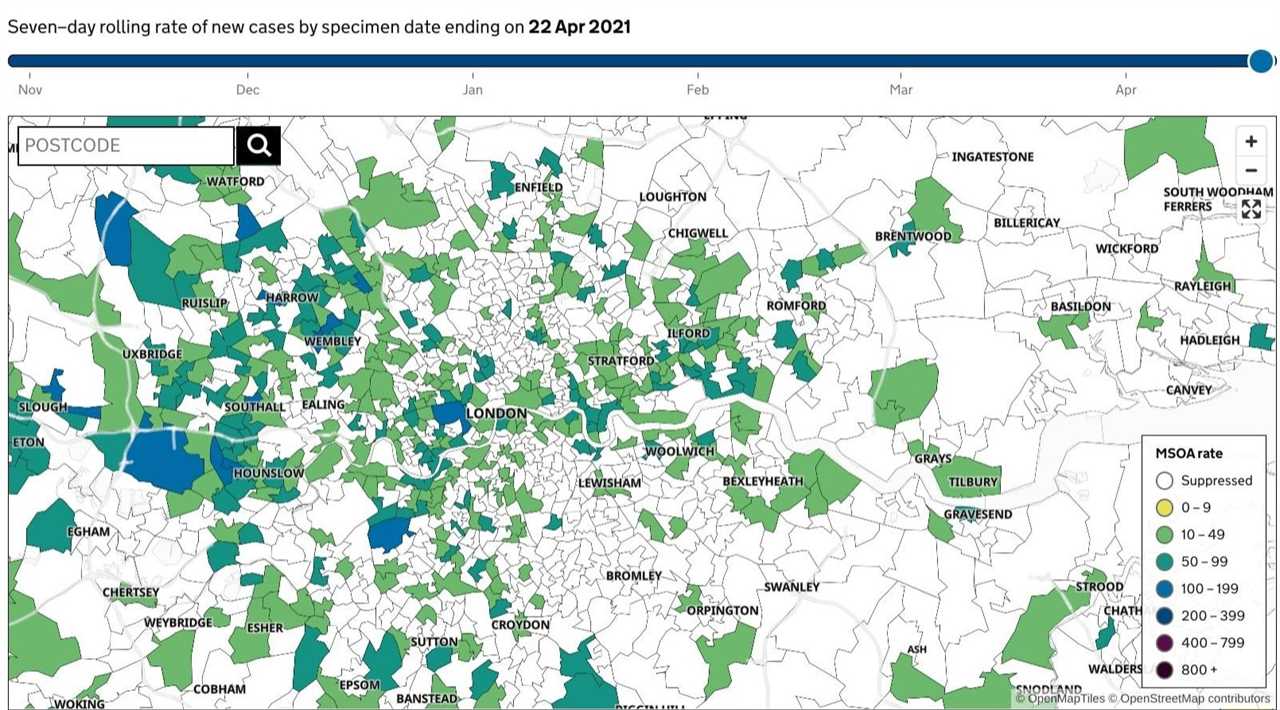
Experts say the figures show Britain’s roadmap out of lockdown is firmly on track.
Lockdown and the bumper vaccine rollout have sent cases tumbling, with infections in the past week slumping almost six per cent.
When recording local cases Public Health England splits the country into 6,800 areas.
Analysis by The Times showed that 4,819 of the zones – some 38 million people – reported two cases or less in the week up to April 22.
The PHE map shows these areas in white, meaning that Brits living there could be almost covid-free regions.
It comes as:
- Spain confirmed it will welcome back Brits from June
- Britain flies vital medical aid to Covid-ravaged India
- Millions more people are eligible to get their Covid vaccine
- Hospital accidentally gives woman wrong second Covid vaccine in first error of its kind in Britain
- Brits will not need a vaccine passport to buy a pint after Boris Johnson shelves plans
Government ministers are due to meet next week to decide if Covid restrictions should be eased further on May 17, as planned.
Under the next stage of Boris Johnson’s strategy to exit lockdown, Brits will be able to meet indoors if they follow the rule of six.
Punters will be able to finally sit inside pubs, and domestic holidays will be allowed once more.
Cinemas and museums can reopen, with theatres, concerts and sports events to allow 1,000 people, or 50 per cent of the venue’s capacity, whichever is lower.
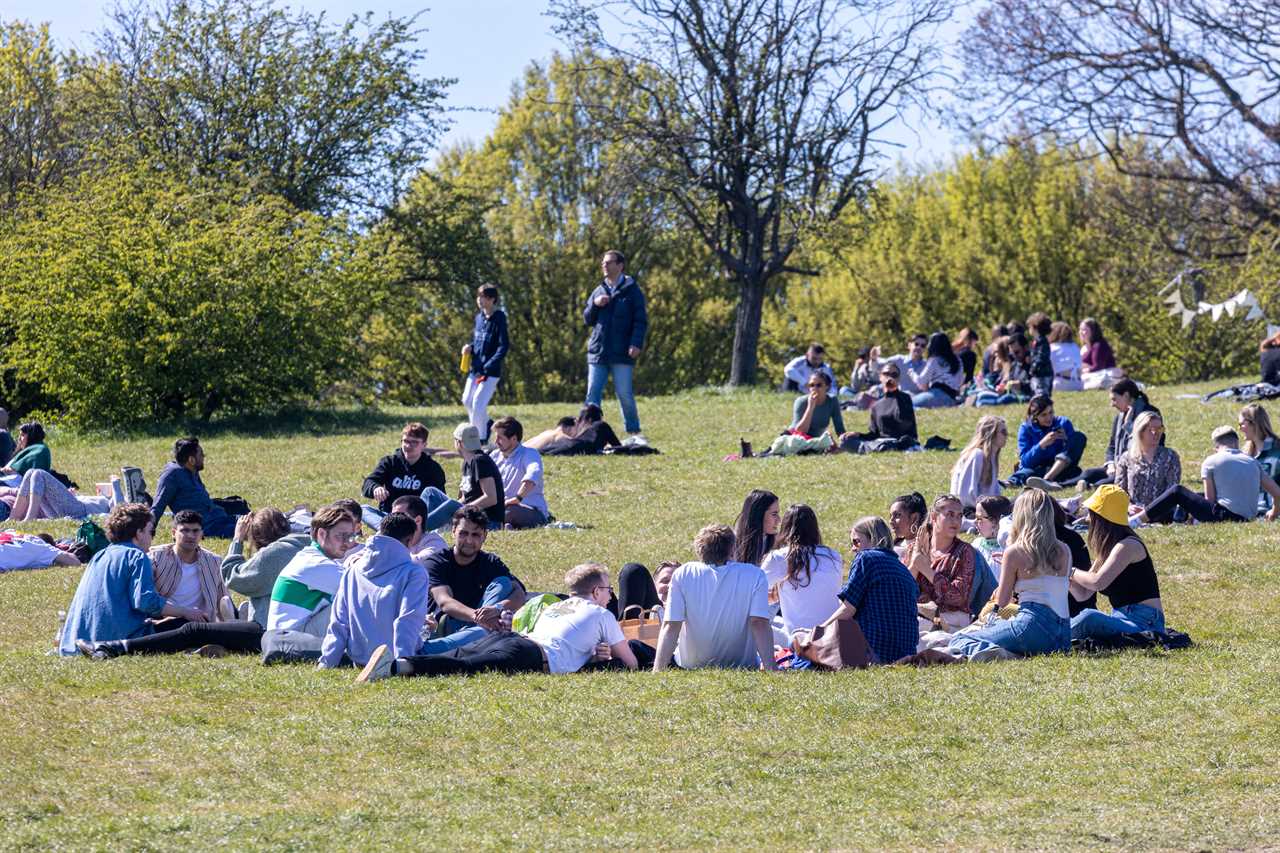
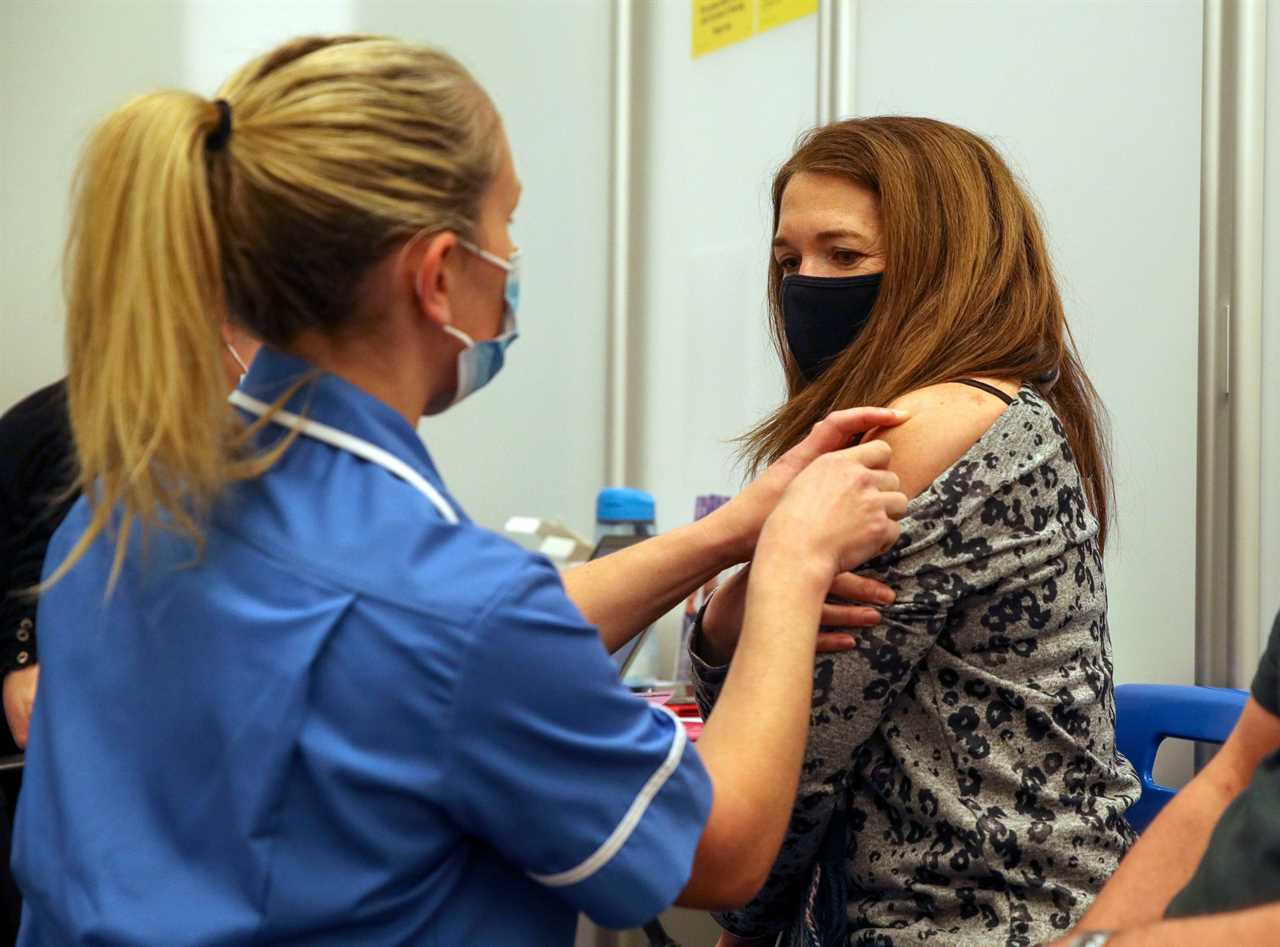
The Prime Minister has said that Britain has a “very good chance” of “opening up totally” on June 21.
In another boost for pandemic-weary Brits, Spain has confirmed it will welcome UK holidaymakers back to its beaches in June.
Visitors from Britain will be allowed to travel with a digital ‘vaccine passport’ following discussions between the two governments.
And all over-40s will being receiving invites to get jabbed by the end of the week.
On Tuesday, there were 17 reported deaths, a fall of 70 per cent in a month, and 2,685 infections recorded in 24 hours.
Dr Mike Tildesley, from the University of Warwick, who sits on The Scientific Pandemic Influenza Modelling group (SPI-M), which advises the government, hailed the fall in infection numbers.
He said: “Things are very much moving in the right direction.
“The roadmap for relaxation is on track, but we need to ensure we monitor it at every stage as the country reopens to evaluate the impact of unlocking society upon cases, hospital admissions and deaths.”
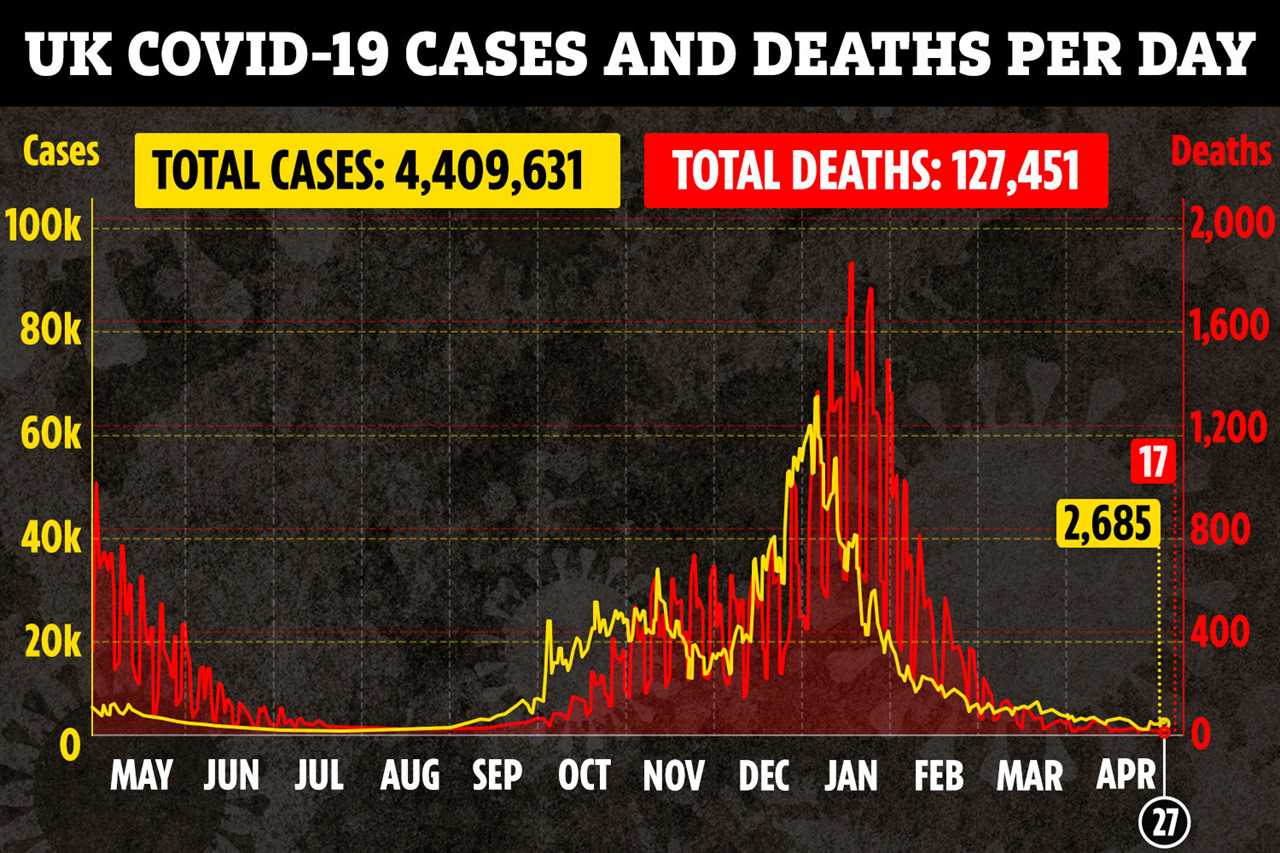
Public Health England’s map of Covid cases shows 4,819 of its 6,800 Middle layer Super Output Areas (MSOA), have their infection rate data suppressed.
That means they reported less than three cases in the most recent sent of weekly figures.
According to The Times analysis of the PHE data, Covid is most rampant in Leicester, Kettering, Slough and Manchester.
Some 75 per cent of people in those towns and cities live in areas there were more than three cases a week.
But in the South West, 85 per cent of Brits live in areas with less than three new cases a week.
Professor Mark Jit, from the London School of Hygiene and Tropical Medicine, who also sits on the Spi-M panel, said: “The chance of someone getting Covid in most of England today is pretty low.
“However, there are also some parts with outbreaks. These can spread rapidly unless we can remain vigilant.”






